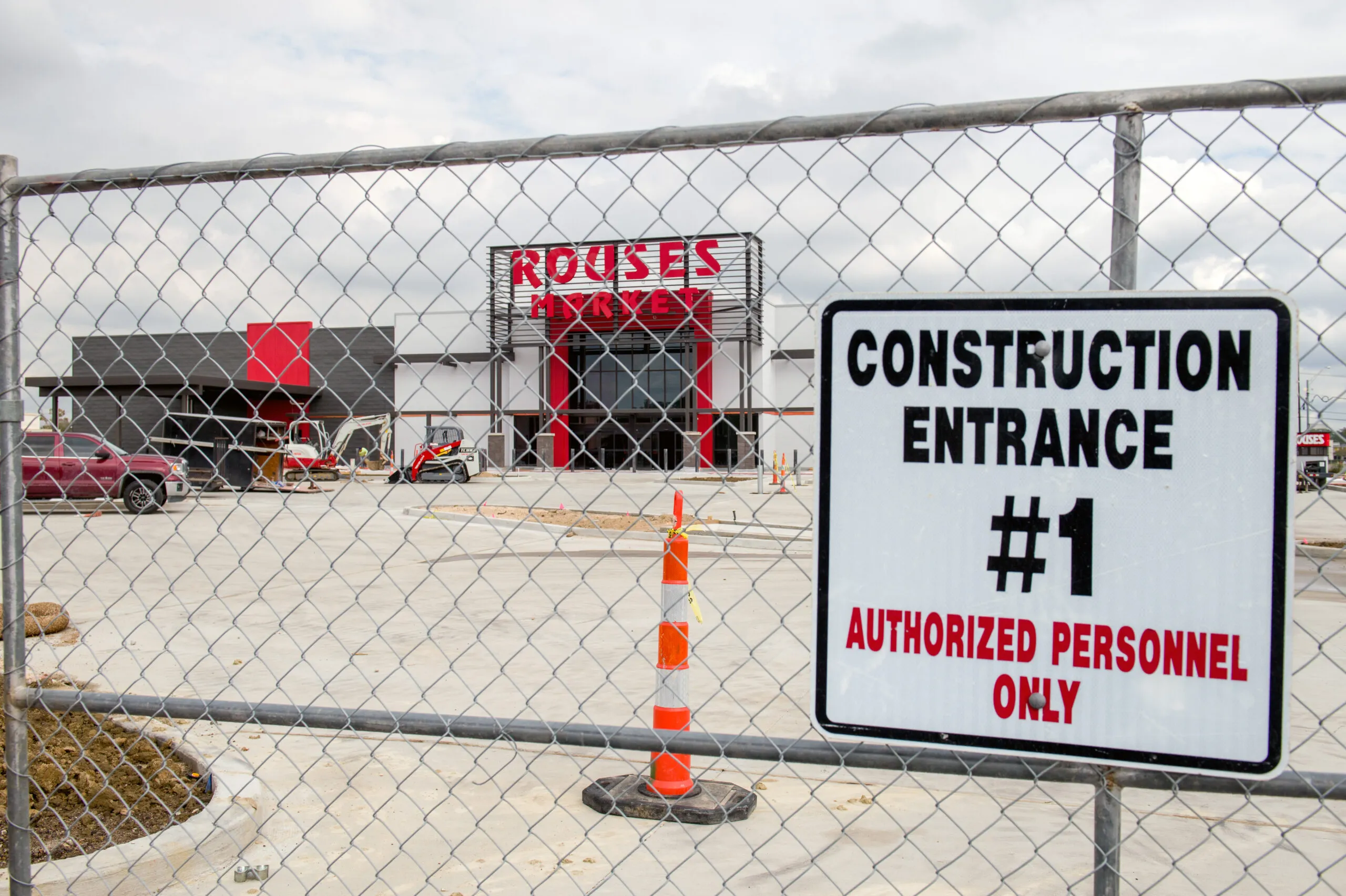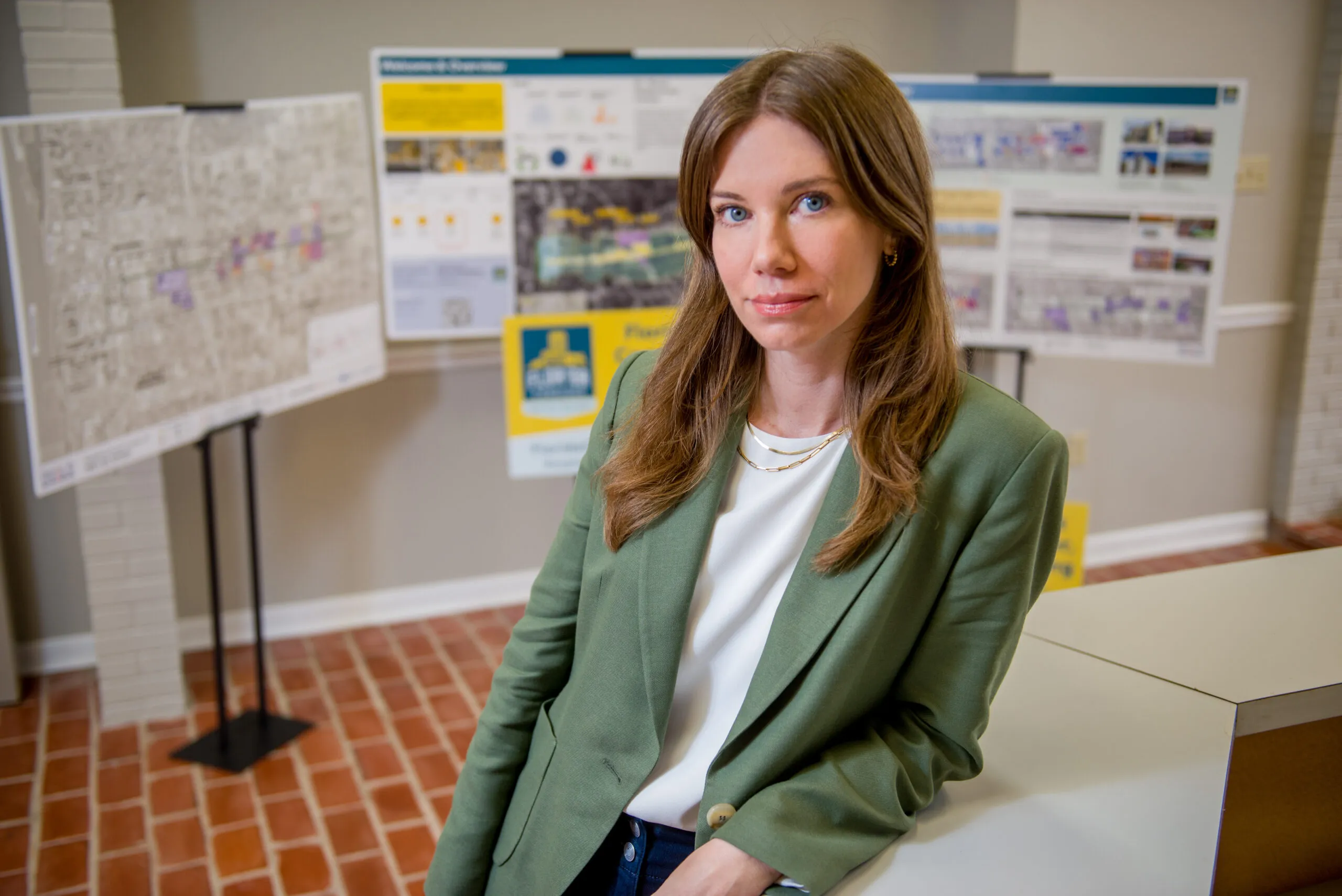
Following tens of millions in recent investment along Florida Boulevard, Baton Rouge’s redevelopment authority is in the midst of creating a master plan for the 12-mile roadway, an important historic commercial corridor for the city that spans downtown to the parish line.
Underway since last June, the Florida Corridor Plan should be completed at the end of the summer, says Build Baton Rouge Vice President for Planning and Policy Gretchen Siemers.
The plan is being funded through a tax increment financing district established in 2021 around the Amazon fulfillment center on the site of the former Cortana Mall. The $215 million Amazon project is seen as a major win for the area.

“That was identified as a priority when the tax increment financing district was created—to do a master plan for Florida because it has been a long-neglected area of the city and really can be a catalyst for positive economic development,” Siemers says.
The Cortana Corridor Economic Development District was created to spark new projects, one of which was the Florida Corridor Plan.
The plan is intended to guide future economic development projects, leverage infrastructure investment and address issues like transportation and land use. Its lead designer is Perkins & Will, a global architecture firm that has worked on other Baton Rouge projects including the Water Institute of the Gulf’s Center for Coastal and Deltaic Studies, LSU’s Patrick F. Taylor Hall, and the campus of Our Lady of the Lake Children’s Hospital.
Perkins & Will urban designer Andrew Broderick says the Florida corridor’s large area and diversity of conditions meant it was important to break the study into subsets.
“Looking at a 12-mile stretch from the levee to the parish line, we worked with both a data-driven mindset as well as input from community members to arrive at six different neighborhood centers,” Broderick says.
The six are designated as I-110 Stitch, Mid City, Foster & Florida, Bon Carre, Cortana and Sherwood.
The planning team, which also includes local subcontractor Franklin Associates, gathered data on social vulnerability, economic development, vacant property, community assets, walkability, tree canopy coverage and other factors to identify the six neighborhood centers.
Once the plan is completed it will be presented to the Planning Commission.
“At that point, it becomes a part of the strategy of redeveloping Florida Boulevard going forward,” says Franklin Associates President and CEO Perry Franklin.
Baton Rouge natives recall Florida Boulevard’s heyday when some of the city’s most popular restaurants were located near the intersection of Florida and Airline Highway, and when Cortana was the area’s sole mall.
Commercial and suburban growth in Baton Rouge’s southeast quadrant pulled energy away from Florida Boulevard, but recent investment, including the Amazon fulfillment center, new charter schools, a Rouses Market and a forthcoming Aldi portend significant opportunity, says Elifin Real Estate President and CEO Mathew Laborde.
“I’ve been telling people for years that I think Florida Boulevard is the best street in Baton Rouge,” Laborde says.
Along with robust traffic counts, the highly traveled street is wildly diverse, both from a population and a development standpoint, Laborde says.
“You can see the ‘tree rings’ of Baton Rouge,” he says. “Florida Boulevard goes from the river, through downtown and Mid City and on out, and you can see all kinds of development and how the city has progressed over the years.”
One of the most talked about recent projects on the corridor is the new Rouses Market at the intersection of Florida Boulevard and North Ardenwood Drive. The $15 million project brought the area a full-service supermarket, which serves both Mid City and north Baton Rouge neighborhoods. The store opened in January.
Rouses Market CEO Donny Rouse says sales have been on pace with expectations and are consistent with sales in the 10 other Rouses Markets in Greater Baton Rouge.
Rouse says the company saw opportunity to open a store in an underserved neighborhood. After looking at other locations in general, it settled on the Florida and North Ardenwood site because it offered favorable ingress and egress and it gave the chain the opportunity to build from the ground up rather than renovating an existing site.
Surrounded by neighborhoods to the north and south, the store also draws workers from downtown and from businesses along the corridor. It follows a 45,000-square-foot model that typifies many other Rouses locations.
“We know that Florida Boulevard will continue growing,” Rouse says. “We expect it to be a great store in the future.”
The planning team has gathered public feedback through meetings and community events and will continue to do so through May. An online survey was live until the end of March.
Broderick says many respondents have expressed nostalgia for what the corridor used to be like, and a desire to see it thrive again. They’ve also pointed out the need for essential amenities, including job opportunities, child care, retail and housing.
“I think housing is a big focus across the corridor, but also locally around different neighborhoods with housing for multigenerational living, housing for families and for young professionals,” he says.
More specifically, Broderick says he could see the plan recommending something like walk-to-work housing around the Mid City medical corridor anchored by Baton Rouge General.
Franklin says that some of the plan’s findings, including potential trouble spots involving pedestrians and vehicles in Mid City, are already being addressed in the city’s MovEBR transportation infrastructure plan. Those include establishing traditional and mid-block crosswalks in key locations, including near Baton Rouge General, Baton Rouge Community College and at Florida and Foster, he says.
Long seen as the racial dividing line in Baton Rouge, Florida Boulevard now has the potential to unite the city, Franklin says.
“We’re asking, ‘How do we take these facts and really make Florida Boulevard the place where the city sort of heals itself and stitches itself back together,’ he says. “It truly is that big of a project.”
